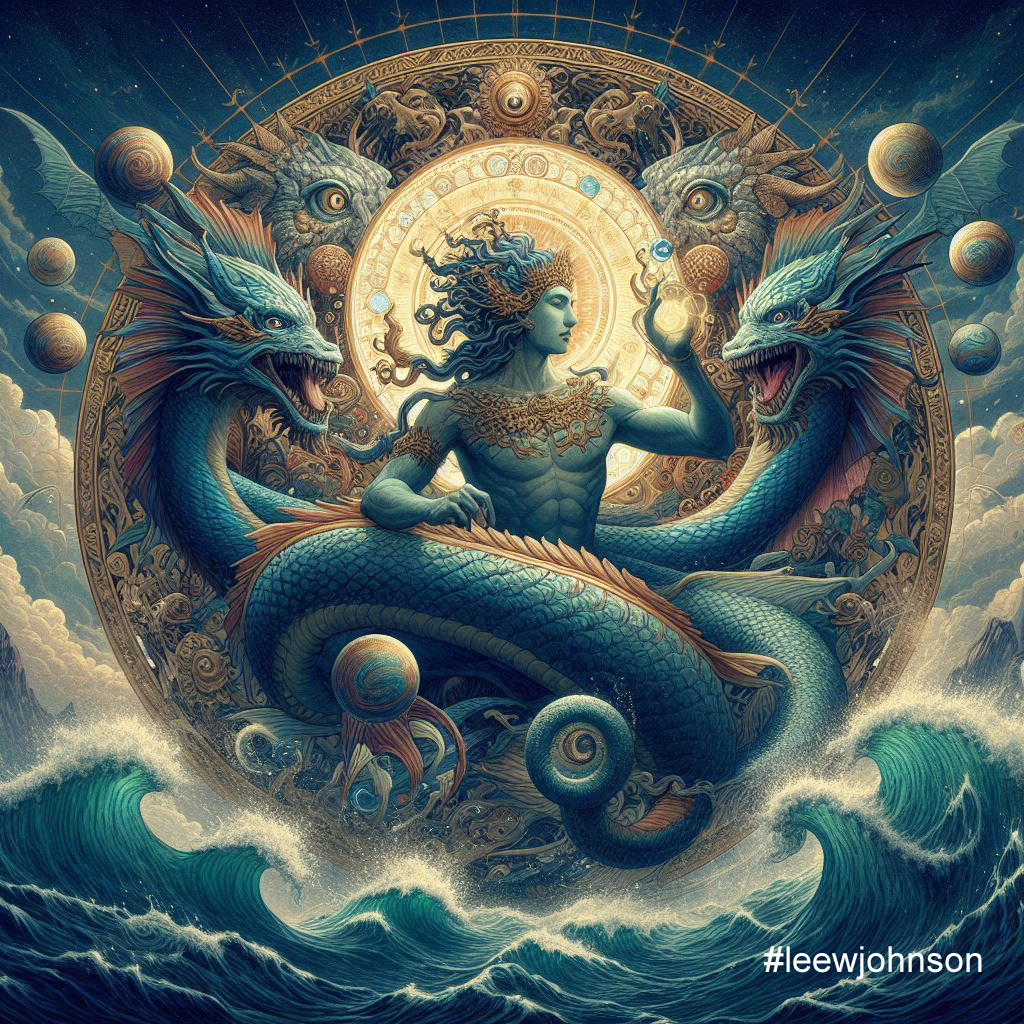Dagon

From Weyer’s Hierarchy of Hell again, and of course, there is the infamous Book of Dagon – Cursed Writings of Assyrian Priests, which was written by the master H.P. Lovecraft, and I am pretty sure forms part of the Cthulu mythos. As far as I know this is differen to Lovercraft’s short story just titled ‘Dagon’. IN fact if you go searching for Dagon through the interwebs you ar eliekly to fall down the rabbit hole of the Cthulu and Necronomicon mythos, which is worth exploration. Not my thing, but many, especially in the arena of Chaos Magick, have found some worth in it.
Dagon is an ancient deity whose worship dates back to the earliest days of Mesopotamian civilization. Revered primarily by the Philistines, but also by other Semitic cultures in the ancient Near East.
Dagon’s name is derived from the Hebrew word “dag,” meaning “fish,” leading many to associate him with maritime themes. However, his origins are more complex and multifaceted. Dagon was originally a fertility god, associated with agriculture and the abundance of the earth. In early Mesopotamian texts, he is depicted as a grain god, emphasizing his role in ensuring bountiful harvests.
The worship of Dagon dates back to the third millennium BCE, with evidence of his veneration found in the ancient city of Mari and other Mesopotamian sites. Over time, his worship spread to the Levant, where he became a prominent deity among the Canaanites and Philistines. The Philistines, in particular, adopted Dagon as one of their principal gods, integrating him into their pantheon and religious practices.
In Mesopotamian mythology, he is often associated with Enki (or Ea), the god of water, wisdom, and creation. This connection underscores Dagon’s significance in agricultural fertility, as water is essential for crop cultivation.
Dagon’s iconography varies across different cultures and time periods. In early Mesopotamian depictions, he is often shown as a bearded man with grain or wheat, emphasizing his role as an agricultural god. In later periods, particularly among the Philistines, Dagon is frequently depicted as a half-man, half-fish figure. This transformation likely reflects his association with maritime themes and the sea.
The half-fish representation has led to comparisons with other aquatic deities, such as the Babylonian god Oannes and the Greek god Poseidon. This imagery highlights the syncretic nature of ancient religions, where deities often absorbed attributes and symbols from neighbouring cultures.
As a god of fertility, he played a crucial role in the agricultural societies of Mesopotamia and the Levant. His association with the sea further expanded his influence, making him a versatile deity who bridged the natural and divine realms.
In addition to his religious importance, Dagon also held political significance. Temples dedicated to Dagon were not only places of worship but also centers of economic and social activity. These temples often controlled vast tracts of land and resources, playing a key role in the administration and governance of ancient city-states.
Dagon’s legacy has persisted into modern times, often as a symbol of the enigmatic and mysterious aspects of ancient religions. In popular culture, Dagon has been reimagined in various forms, from H.P. Lovecraft’s mythos to contemporary fantasy literature and media. These modern interpretations often emphasize his aquatic attributes, casting him as a primordial sea god with an aura of ancient power and mystery.